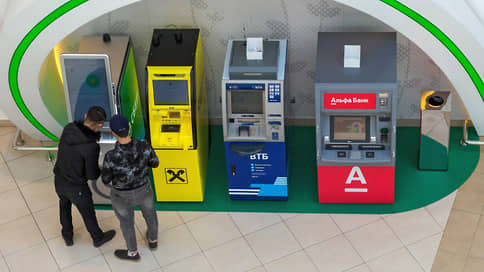Installment reserves – Newspaper Kommersant No. 176 (7377) dated 09/23/2022
[ad_1]

Sub-sanctioned banks will receive from the Central Bank an installment plan to create reserves for blocked assets for ten years. The regulator is also ready to provide the market participant with a grace period for increased capital adequacy requirements. The installment plan will make it possible to sell non-cash-generating assets, experts say. Lowering the requirements for capital adequacy will make it possible to pay off shareholders, primarily the state.
The Central Bank plans to give credit institutions ten years to create reserves for assets blocked due to sanctions, promising “maximum flexibility,” Alexander Danilov, head of the regulator’s banking regulation and analytics department, said at the “Banks of Russia – XXI Century” forum.
After the outbreak of hostilities in Ukraine, the largest banks, both state-owned (Sberbank, VTB, PSB) and private (Alfa-Bank, Sovcombank, etc.), fell under sanctions, which include freezing assets in various jurisdictions. At Sberbank, a number of assets “were confiscated and sold (subsidiaries in Eastern Europe.— “b”),” said its head German Gref. Foreign currency balances on correspondent accounts of Russian banks have also been frozen.
In the case of VTB, the volume of frozen assets amounted to “about 600 billion rubles,” specified its head Andrei Kostin. He himself proposed to stretch their reservation for seven to ten years. “Most assets that are in question will go into cash or loss much sooner. But some of them, the fate of which can be clarified for a long time, should not be reserved immediately, ”says Sergey Khotimsky, First Deputy Chairman of the Board of Sovcombank.
There are no other obvious interested parties for such long periods, one of the financial market experts believes, and the easing itself is actually an installment plan for recognizing losses for a long period. At the same time, the expert emphasizes, when falling under sanctions, each bank had to make a decision on reserves for assets, including on the basis of a judgment about the probability with which it would be able to get them back.
The imposition of sanctions does not allow a number of assets of Russian banks to demonstrate cash flows, but this does not mean that their value is zero, says ACRA CEO Mikhail Sukhov. The proposed long term, in his opinion, looks reasonable and “begs because of the incomprehensibility of the situation.”
But options for working with such assets remain, the expert emphasizes: for example, selling at a discount to any friendly jurisdictions that are not afraid of sanctions, asset exchange, etc.
So there is no need to write them off completely, especially against the background of the banks’ lack of liquidity problems, Mr. Sukhov believes.
In addition to the installment plan for the creation of reserves, the Central Bank is ready to give banks capital relief from 2023. According to Alexander Danilov, the regulator can cancel capital adequacy allowances for a year, but then credit institutions must restore them within five years. In particular, the minimum capital adequacy ratio of 8% is subject to a number of increments above the minimum: 1% for systemically important banks and 2.5% to maintain capital adequacy.
In exchange for this, the Central Bank will require banks to pay shareholders no more than 50% of profits. It will not be possible to spend the undistributed profits of previous years. In fact, for the timing of the recovery of allowances, the most important is the interaction of banks and their shareholders, and mainly the state, and the issue related to the expectations of dividend payments will be decisive, Mikhail Sukhov notes. The term of five years, he believes, is given in order for banks to both support the budget and smoothly improve capital adequacy.
[ad_2]
Source link





